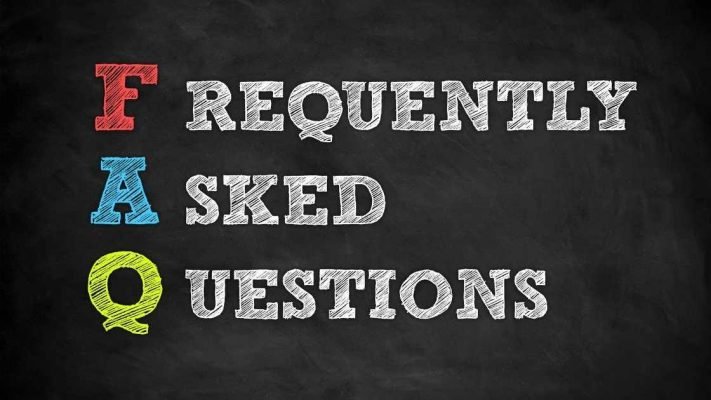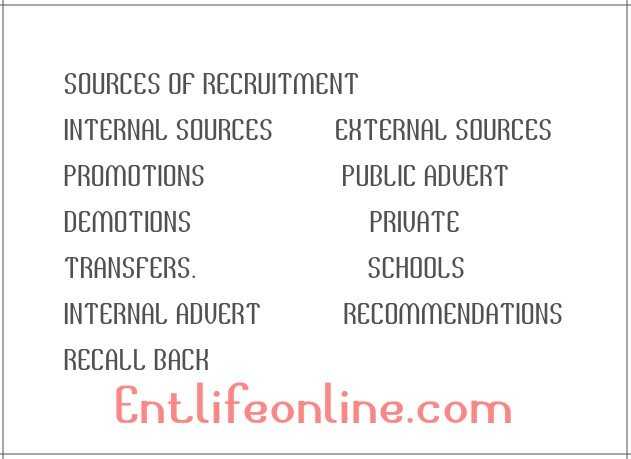Strategies for product life cycle: Improved PLC Marketing Strategies
Strategies for product life cycle are simply those ways, methods or means adopted by companies, marketers or business owners to ensure their product is successful at every stage of the product life cycle.
Table Of Contents
Strategies for product life cycle

1. Introduction stage – Product Life Cycle Strategies
First off…
This is the stage where your product is being prepared to enter the market for the very time.
So to ensure you introduce the product into the market successfully, the following strategies may be adopted:
- Extensive Advertising
It’s no more news the essence of creating a product is to tackle a need. Or be presented as an improved solution to a particular problem.
Now after creating the product, there’s need to make sure your target audience are aware of that solution to their problem (which is your product)…
…and the one of the most realistic method is by using the various types of Advertising Media to get the words of your product outhere to your potential clients.
It might interest you to know:
types of advertising media are simply those technological artefacts marketers, business owners, firms, and advertisers in general use in propagating promotional messages about a product or service to their target audience.
And they include: Commercial radio, Television advertising, Outdoor advertising and cinema advertising to mention a few.
- Pricing strategy
After coming up an advertising strategy that works, you also want to consider backing it up with a suitable price for your customers.
Below are some of the pricing strategies at your disposal for this PLC stage.
1. Skimming pricing.
This technique is all about introducing the product with an initial high price… but with the intention of reducing it in due time.
The idea behind this technique is this:
Firstly, to focus on selling to the selected few who are ready to buy immediately.
Secondly, to use the high price to recover profit per unit as much as possible.
Lastly, lowers the price to make the product available to a wider market.
For example, organizations leveraging this strategy include Sony and Xbox .

Their game consoles are usually launched at high prices and slowly lowers as time goes on.
2. Penetration pricing
…just of the opposite of skimming pricing.
Here, you launch the product with an initial low price…
…but with the intention of increasing it when the targeted sales increase and market share has been achieved.
For example: organizations leveraging this strategy include DirecTV and Dish Network


The satellite tends to set a relatively low price to attracts customers to subscribers…
…and then slowly increase the price as their customer base increases.
Other product life cycle marketing strategies you should consider for this stage include all but not limited to the following:
- Discounts to dealers (middlemen, agencies etc)
- Test marketing (this strategy is often adopted before the proper introduction of the product)
- Discounts to customers
- Coupons
Bottom line:
The bitter truth is that nobody knows about your product… at least not yet.
And because people can’t buy what they are not aware off…
… the major marketing strategy the for the introduction stage is getting those who might be willing and able to buy your product to know that you’ve got something to solve a particular problem they’re having via ADVERTISING. or by running targeted ads through social media.
2. Growth stage – Product Life Cycle Strategies
Below are some of the product life cycle strategies adopted by firms, business owner and marketers at the growth stage.
- Improved customer service
Customer service is all about taking proper care of your client by making sure they’re provided and delivered professional, helpful, high quality service and assistance…
…and to achieve this, you want to master the 4ps of customer service.
- Politeness: Treat your customers with respect. (thank you, sorry, excuse me, avoid the use of negatives words, active listening etc)
- Promptness : Make sure they get the product on time just as you promised. (8am is 8am, 6pm is pm. steer clear of order delays and cancellations.
- Professionalism and lastly…
- Personalization: To an extent customers appreciate business owners who know them on a personal level . Calling them by their name shows you’ve done your homework and that you have them at heart.
Personalization on its own is a very key product life cycle marketing strategy leveraged by top brands…
i can’t actually stress this enough right now, albeit here’s is a snippet of what i am talking about.


As at when this personalised strategy was launched, i often tear down stores to buy a coke with my name on or that of my dad. Overall, my family’s coke consumption rate grew by 5%.
But for Coke :
The company saw a 2% increase in soft-drink sales when the “ Share a Coke ” campaign was launched in the U.S…
…that was followed with an increased Coke consumption rate from 1.7 to 1.9 billion servings per day.
The increase made #shareacoke a No. 1 global trending topic on social media as that time.
What’s more?
Personalization helps to build loyalty.
NOW;
All of the above ( 4ps of customer service ) are a must to ensuring your customers keep coming to repeat purchases.
But here’s the kicker:
if you’re into taking care of your customers let’s say – only Before selling to them… (that is, they’re on their own after buying)
…the improvement can be made by also extending the service to During , and After selling to the them.
This is to ensure your clients requirements are beyond met. You want to also WOW them.
Aside that, the professional, helpful, high quality service and assistance provided especially after selling to them will help gain their TRUST.
- Competitive pricing strategy
When your prices are almost equal or equal to that of your competitors, your customers will find it needless to abandon your product because of it price… especially when your product quality is also very competitive.
while this particular product life cycle marketing strategy maybe a brilliant idea, you need to ensure it’s not at the expense of your business overall growth.
Bottom line?
Adopt a pricing strategy after you’ve considered the following factors
- Fixed and variable cost of the product
- Target audience and their willingness to pay
- Company’s objectives
- Proposed positioning/ distribution strategies (whether it’s intensive, exclusive or selective)
- Competition
The essence of the above consideration is to ensure you get a positive return of investment. This is exactly what top brands do.
- Introduction of other product version
For example, this product life cycle marketing strategy is where a company into yoghourt production introduces other versions such as vanilla yoghourt, chocolate yoghourt etc…
The need for this is so enable the firm satisfy various type of customers and also encourage selection
- Improve brand image
The organization or business can achieve this by being socially responsible.
This include all but not limited to:
- Sponsoring SOCIAL event or activities for occupants of the society they are operating their business
- Construction and repairs of roads
- Hosting seminars
- Youth empowerment and entrepreneurship programs
- Scholarship
- … and other CSR activities can also be used to build brand image.
- Improved distribution channels
This strategy comes in handy to ensure your product is available at the right place, right time, right quantity and in the right form as demanded by your target audience).
- Improved promotional campaign :
Kind of similar to the ones done on previous stage but with a little bit of difference. The promotional campaign carried out here must here serve three key purpose(s):
Firstly, to create awareness or inform prospects about the product
Secondly, to persuade them to buy the product
Thirdly, to serve as a reminder to your audience who are aware of the product but are yet to try it.
Most importantly , you want to consider using Aggressive Marketing.
You might be wondering:
What is aggressive marketing?
In summary, this is simply the application of all promotional tools such as advertising , personal selling, sales promotion, publicity and public relation in other to ring the bells of your product in the ears of your target audience (inform, convince and remind).
3. Maturity stages – Product Life Cycle Strategies
Remember…
This stage is when the product records it’s highest sales volume.
It’s also at this phase of the product life cycle stages the product has achieved total acceptance from it’s actual buyers; Plus, you’re also likely to record a very high quantity of buyers returning for your product as the best solution to their needs/ problems.
However… At some point the company’s product remains stagnant and the buildup of customers begins to shrink.
This is because many competitors are now in the market, and the firms profits begin to decline as competition increases.
So For this stage, the following product life cycle marketing strategies should be considered.
- Increase product quality or add more features
As you may already know it’s quality over quantity for most people. The money is hard-earned, so you want make sure your product is worth it. Notwithstanding, people want more… and to stay relevant in today’s highly competitive world, you need to give them more
I’ll explain:
let’s say you’re into mouth wash…


…and your unique selling point was strong gum and white sparkling teeth.
Now imagine working on some more features for your product which goes beyond teeth whitening to tackling tooth decay and or curing mouth odor…
…by so doing, you’re giving your clients more reasons to buy – and that – they will do.
- Maintain or decrease product price.
It’s no news that the competition at this stage will be on another level. Aside improving product quality, other companies will also be cutting down prices to attract new customers.
You can do same if you want to.
However, the goal is for you to remain competitive with price, maintain market share and also maximize profit. All at the same time.
- Maintain or Increase creative promotional or ad campaign to reach more prospects
Since your product has been improved with more features added…
…it’s only fair if you decide to level up your promotional activities to get new markets (more people whose problem your product can now solve) informed, persuaded and reminded of your product.
Below are other product life cycle marketing strategies for maturity stage you need to know.
- Improve distribution strategies to ensure product availability where needed.
- Improve customers service
- Maintain or decrease cost of production.
4. Decline stage – Product Life Cycle Strategies

The decline of a product kicks in when either or all of the following happens:
- The product market becomes oversaturated
- When you fail to do the needful at the maturity stage by adopting the marketing strategies
- Changes in consumer preferences
- Technological advances
It’s also at this stage all marketing mix and marketing efforts starts to decline.
Now:
if the product generated loyalty from customers, you can still retain those customers during this stage but the product won’t attract new sales from new customers.
However, the marketing mix that remains should be aimed at REINFORCING the brand image of the product…
…this is to guarantee you stay positive in the eye of the loyal customers for as long as possible.
While the above tips are still very helpful…
…the main product life cycle marketing strategies for decline stage are as follows:
- Engage in full rebranding and repackaging of the product .
Doing this will extend the product life cycle … as some customers will buy the product not knowing it’s something they’ve tried before.
What’s more?
It will also attract a few more individuals.
For example , a product repackaged with popular sport players with attract sport lovers, popular cartoon characters like ben 10, spongebob etc will do well with kids.
- Remove the product from the market entirely.
There’s little to talk about here. The ideal thing is to stop further production of the product; and just try to sell out the existing stock.
And lastly…
- Maintain or continue with the product
This strategy is with the expectations that your competitors will withdraw their product from the market.
However, expenditure on promotional activities and other costs should be reduced. The essence of this is to ensure you still enjoy a positive return of investment – no matter how small.
Speaking of profits, you also want to consider maintaining your product in EFFECTIVE market segments…
…and have them removed from other remaining segments with nothing to offer.

See what others are reading:
- 10 mandatory factors you must consider before choosing a business location
- The Consumer Adoption Process in Marketing
- See why advertising is key for every business
FAQs

What Are The Marketing Strategies For Managing The Product Life Cycle?
-
Increase Frequency of use
-
Increase the number of users
-
Find new users
-
Change package, sizes, labels, or product quality.
How does product life cycle stage impact marketing strategy?
In my opinion, understanding the current stage of a product will help you determine how to increase sales and achieve a sustainable competitive advantage over your competitors.
In an instance whereby your product is in introductory stage with high competition – maybe due to other existing similar products; Aside aggressive advertising, your best bet here will be making sure your product is of higher quality and of course more affordable in other to break Into the market easier.
Everybody loves affordable and quality products.
However, they need to know it exists… therefore here’s is where aggressive marketing or advertising is needed.
The strategy adopted by making your price cheaper is called penetration pricing strategy . And it is usually adopted to help you gain footing in the market.





